Foden's England Failings
There’s a lot of competition but none of England’s players in the recent Euro 2024 tournament disappointed quite as much as Phil Foden. Coming in to the tournament following a sensational season with Manchester City, Foden scored 19 goals and provided 8 assists in the Premier League helping City to yet another Premier League title, to add to the UEFA Super Cup and the Club World Cup titles captured earlier in the season. The level of his performances were such that he was voted FWA Footballer of the Year, Premier League Player of the Season, Manchester City Player of the Year and PFA Players’ Player of the Year. Nobody came into Euro 2024 hotter but his form was not apparent in an England shirt, so much so that Foden had more children (1) during the tournament than he did goals or assists.
I have found it frustrating to watch because even a lowly level one football coach like myself can see fundamental problems with the way Foden had been utilised by England. Foden was used as the left inside attacker in a 4-2-3-1 with a right footed left back, Trippier, providing the width. From my experience coaching a junior football team I am well acquainted with the compromises of playing right footed players at left back. Maybe that’s a meatier topic for another day, the problem with Foden seems so fundamental that I think I can explain it by working from first principles.
Shielding the ball in football
How do you prevent an opponent stealing the ball away from you? There’s very little you can do to stop the opponent taking possession. Essentially, all you can do is position your body between your opponent and the ball thereby physically prevent the opposing player from reaching it. Inserting yourself between the ball and your opponent and maintaining that situation is called “shielding” the ball and it is a fundamental football skill. Stick with me and I will return to Foden in due course.
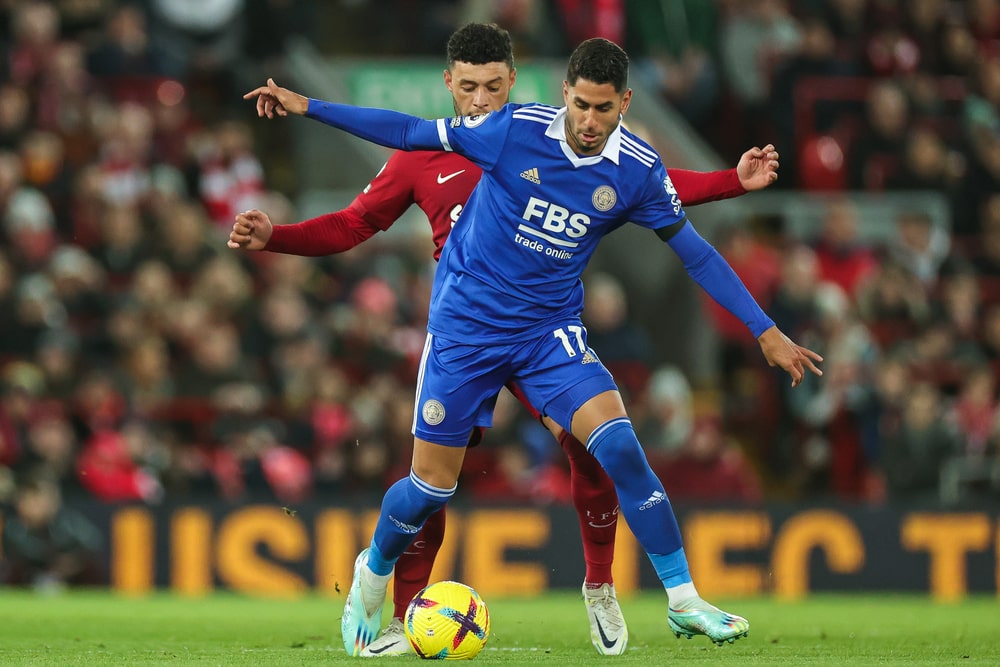
In the image above, a Leicester City player (Perez) shields the ball from a Liverpool player. The Liverpool player is to Perez’s back and the ball is in front, an ideal scenario for shielding the ball.
Not all of football can be played with your opponents at the rear and the ball in front of you. Far from it. In open play, a more regular occurrence is the ball is at your front and also in front of the defender. The defender will take up a position between you and the goal, or at least in a manner to stop you making effective progress up the pitch. Now what?
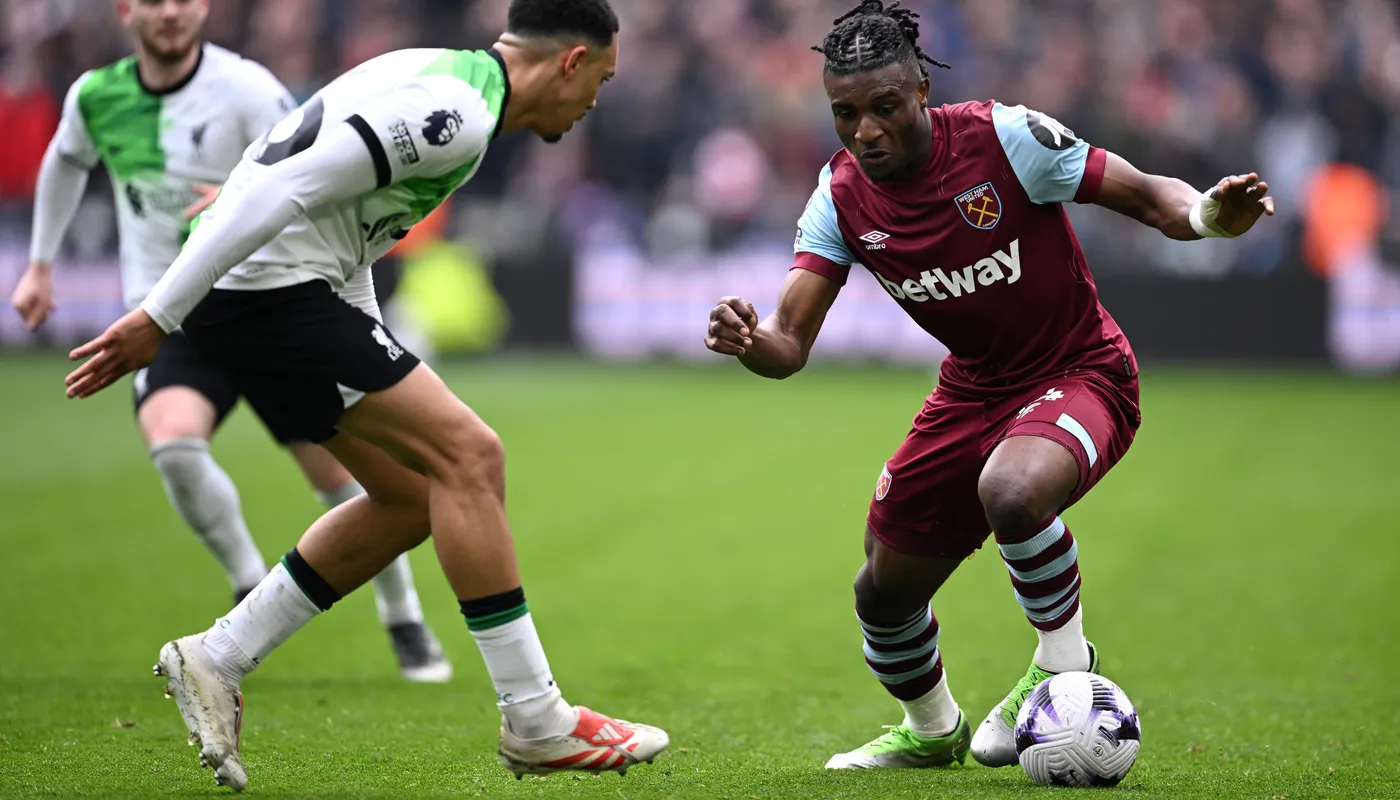
The defender wants to position himself between you and the goal. Failure to do this will mean avoiding the defender will take you towards the goal. The dynamics of this constraint on the defenders means that, if you are an attacker on your team’s left, the defender for this part of the pitch (called a Right Back) will be in front of you but firmly to your right hand side. If you look at the above image, a West Ham player (Kudus) is in that exact situation against Liverpool. Kudus is pushing the ball with his left foot away to his left side. In a way, this also shields the ball – the defender, Alexander-Arnold, can only touch the ball by reaching all the way across Kudus’s body. It’s possible the only way he can get any kind of touch on it is by diving in with his feet, a very high risk thing to do, which in the best case will probably only succeed in giving West Ham a throw-in.
This technique exhibited by Kudus is less ideal than the clearer case of shielding the ball demonstrated by Perez above, but it is also more frequently useful.
Foden’s dribbling technique
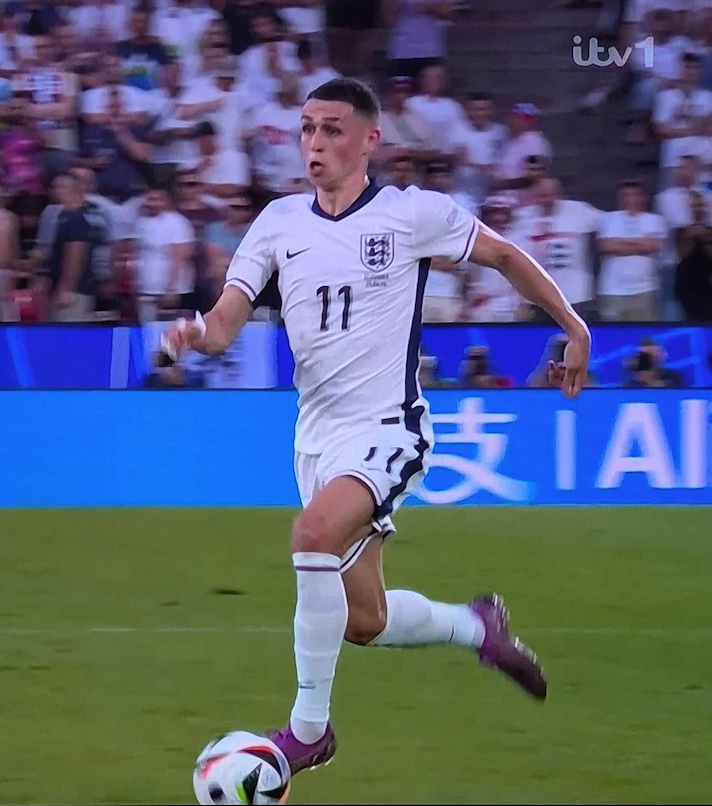
With the idea of shielding the ball in mind, consider the above image with Foden dribbling in full flow. Look at how Foden dribbles by manipulating the ball with the outside of his left foot, the ball is slightly to his left side rather than directly in front of him. This is Foden’s dribbling technique, there’s absolutely nothing wrong with it and he is a very good dribbler. There are implications arising from his preferred technique, however, think about how defenders could approach Foden when he is dribbling, if they approach from his left, the ball will be closer to the defender than Foden’s body so the ball will be easier to access; if they approach from the right they will have to reach all the way across Foden’s body to get the ball and it will be very hard to access, just like in the picture of Alexander-Arnold and Kudus above.
Foden’s contributions
You’ve probably worked out where I am going with this. Having discussed the principles of shielding the ball and Foden’s dribbling technique, I can now illustrate how things played out. I’ve got pictures of the same sequence of events, at four different points in the first half of the game against Slovenia. I’ve only included one picture sequence here to keep things brief.
The sequence is essentially this: Foden receives the ball on the left side of the pitch. He wants to turn in field, of course he does, almost all the pitch, the vast majority of his team-mates and the goal is infield. There is some pressure behind him, which he evades with a turn to his left and a burst of pace.

The initial burst of pace buys Foden some time but as he travels with the ball he slows slightly allowing the opponent applying pressure to get closer and another approaches as he moves in-field.
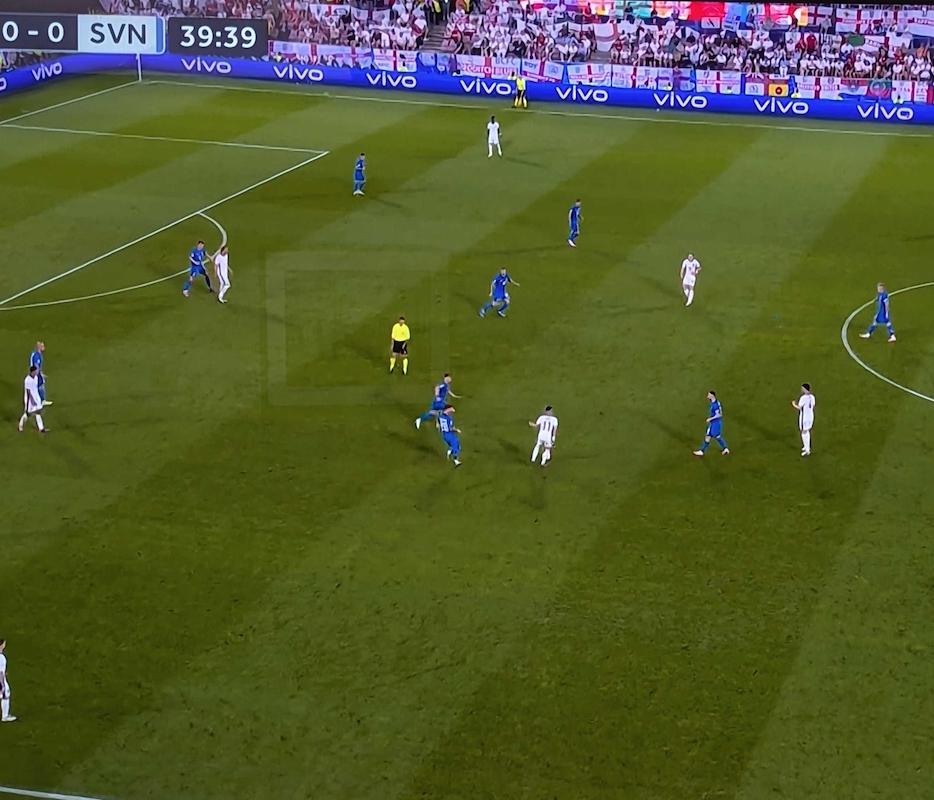
The pressure comes from his left side and therefore in order to shield the ball from pressure, Foden moves the ball inside his left foot so it’s further from his opponents and he is better able to protect it. To evade the pressure in a low risk way, Foden looks for a pass, but where the ball is relative to his strong foot means the most natural pass for him to play is to drop the ball back to the central defender, Stones.
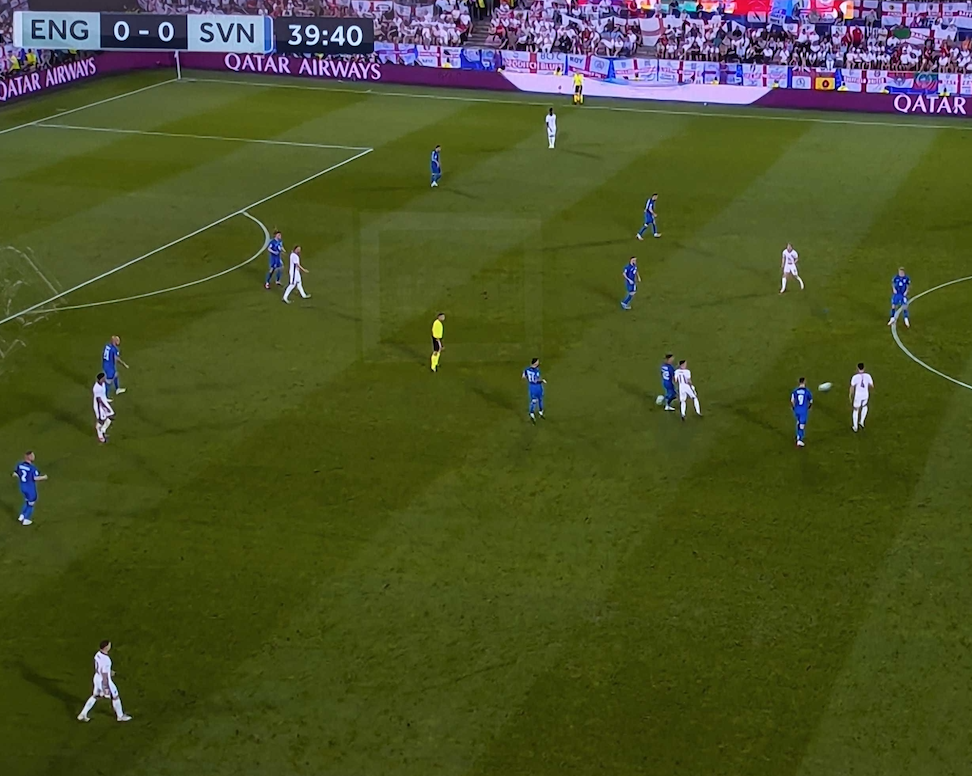
To sum up, the contribution from Foden to this sequence of possession is to receive the ball from a defender on his team, drive in-field, encounter pressure and retain the ball by passing backwards to a centre back. Obviously when Foden is picked to play for England everyone imagines him doing the kind of things he did for Manchester City. This is absolutely not what anyone had in mind, and yet, it’s what happened as a consequence of both his dribbling technique and his position.
Foden would be a much better player for England if he was played centrally or on the right, where his dribbling technique would naturally shield the ball from pressure as he travels in-field. It seems so painfully obvious.
To be completely fair, I should consider the one successful progressive sequence along side the four underwhelming sequences.
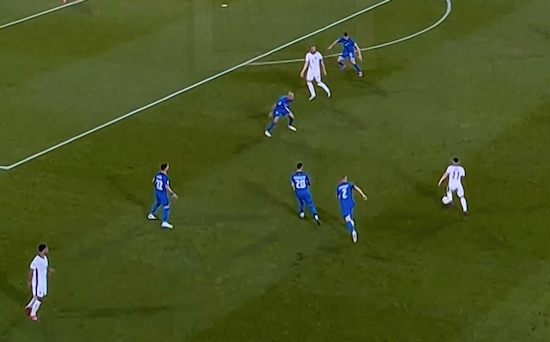
Here the opponents are sufficiently disorientated that Foden is able to turn without encountering pressure. He dribbles towards the box using his favoured technique, in fact, the first picture I used of his dribbling technique is this same dribble looking from a different angle.
Foden is able to progress the ball and avoid encountering pressure by dribbling very quickly, this is part of his skill set, dribbling quickly. The down-side to dribbling quickly is that playing a gentle pass when running quickly is very hard, and sure enough Foden over-hits the pass attempting to slide Kane in. To labour the point, even when the opposition is sufficiently disorganised that Foden succeeds in advancing the ball with a dribble from his starting point on the left he will be traveling very quickly with the ball and any pass in to the box will have to be perfectly timed and very carefully weighted.
Foden’s dribbling technique is ideal for playing very wide on the left like an old school left-winger, running down the line and naturally keeping the ball far across his body away from the opposition right back using the same technique that Kudus is using in the earlier image. That’s not really Foden’s game. He’s great at receiving the ball and turning in congested areas. If he picks the ball up on the right and drives in-field then his natural dribbling technique will keep the ball away from the defenders who will be applying pressure on his right hand side.
Playing Foden on the left means his dribbling technique is a weakness when it should be a strength. This is why Foden was such a disappointment for England at the Euro 2024 tournament.